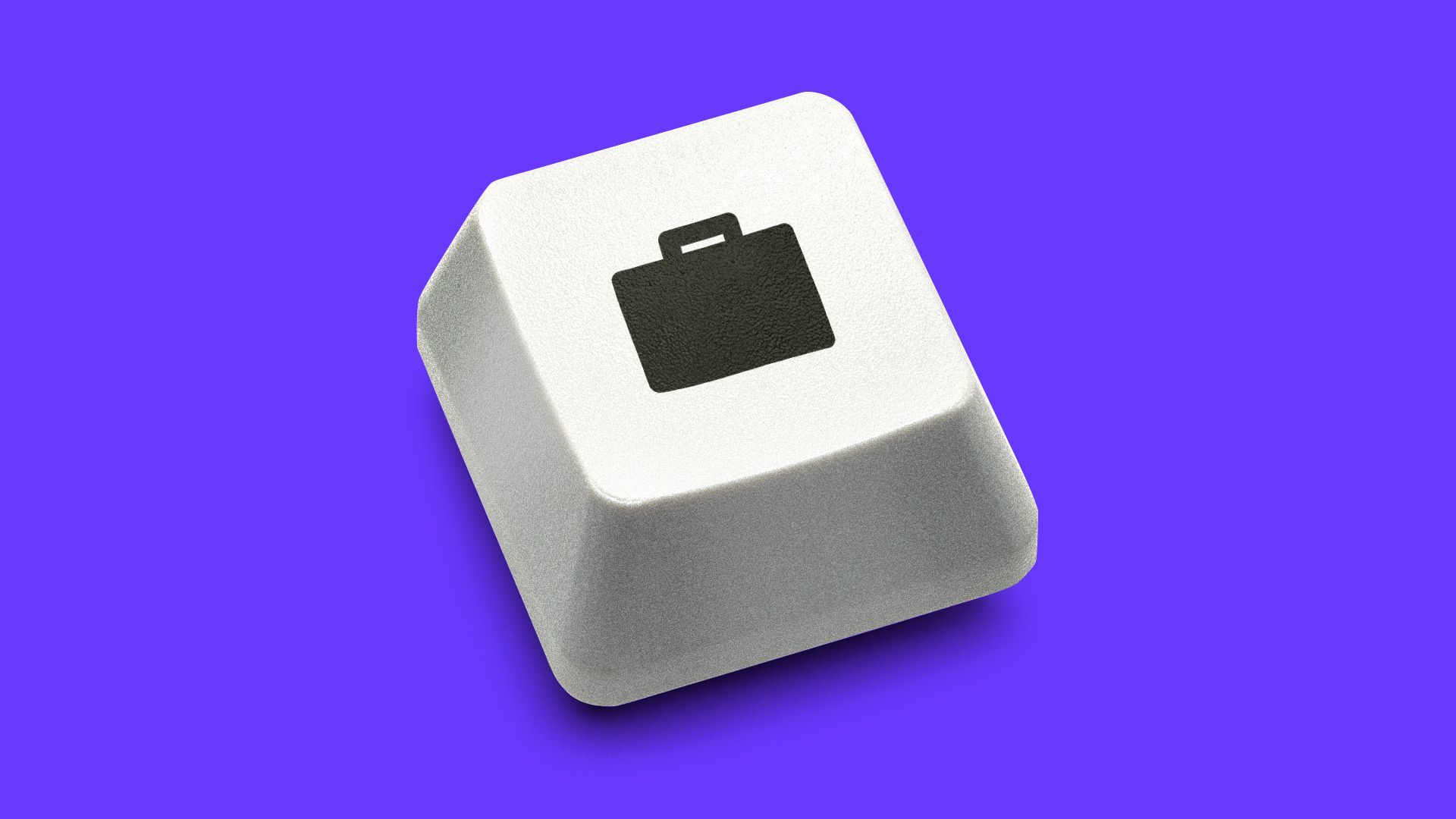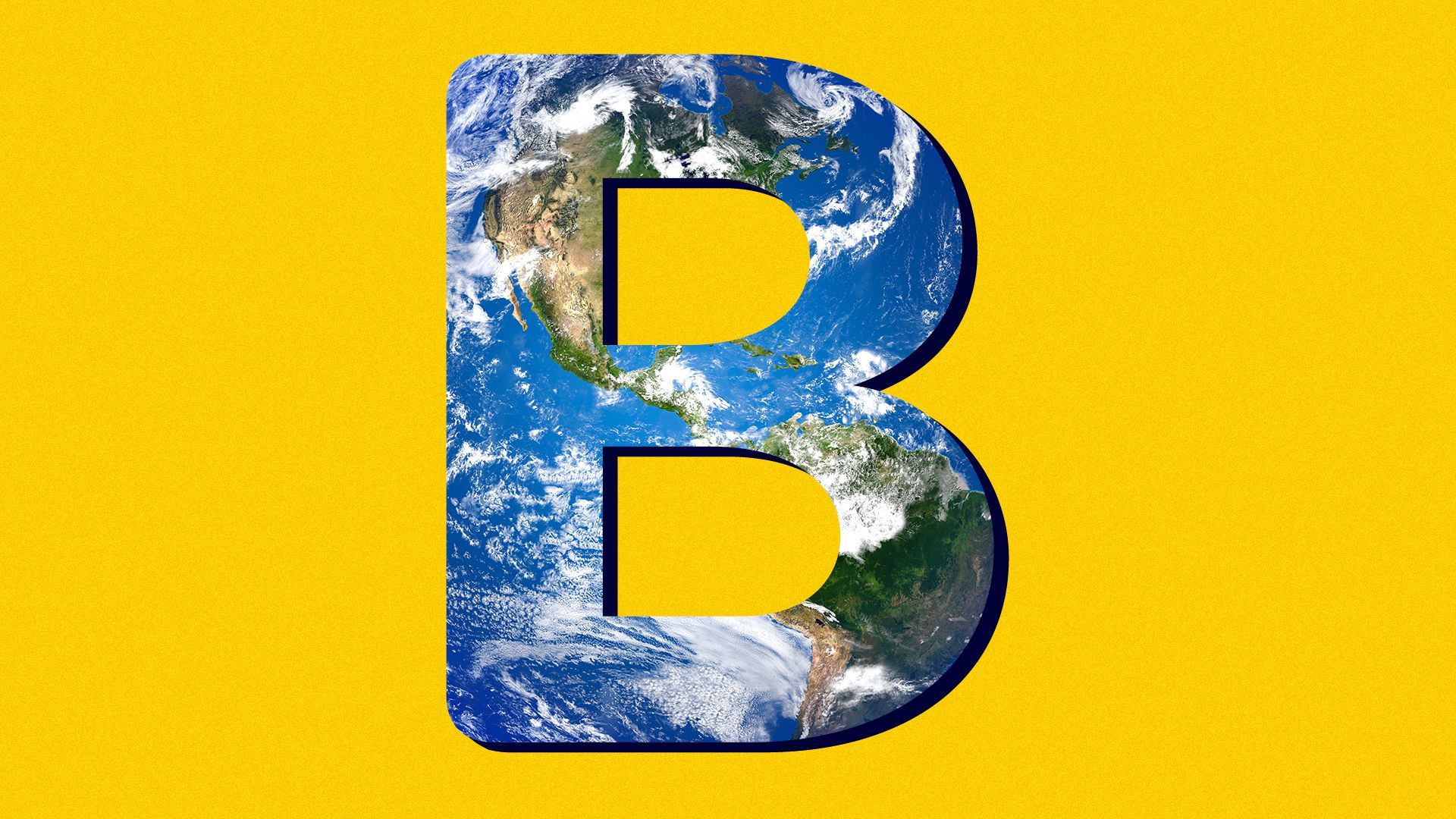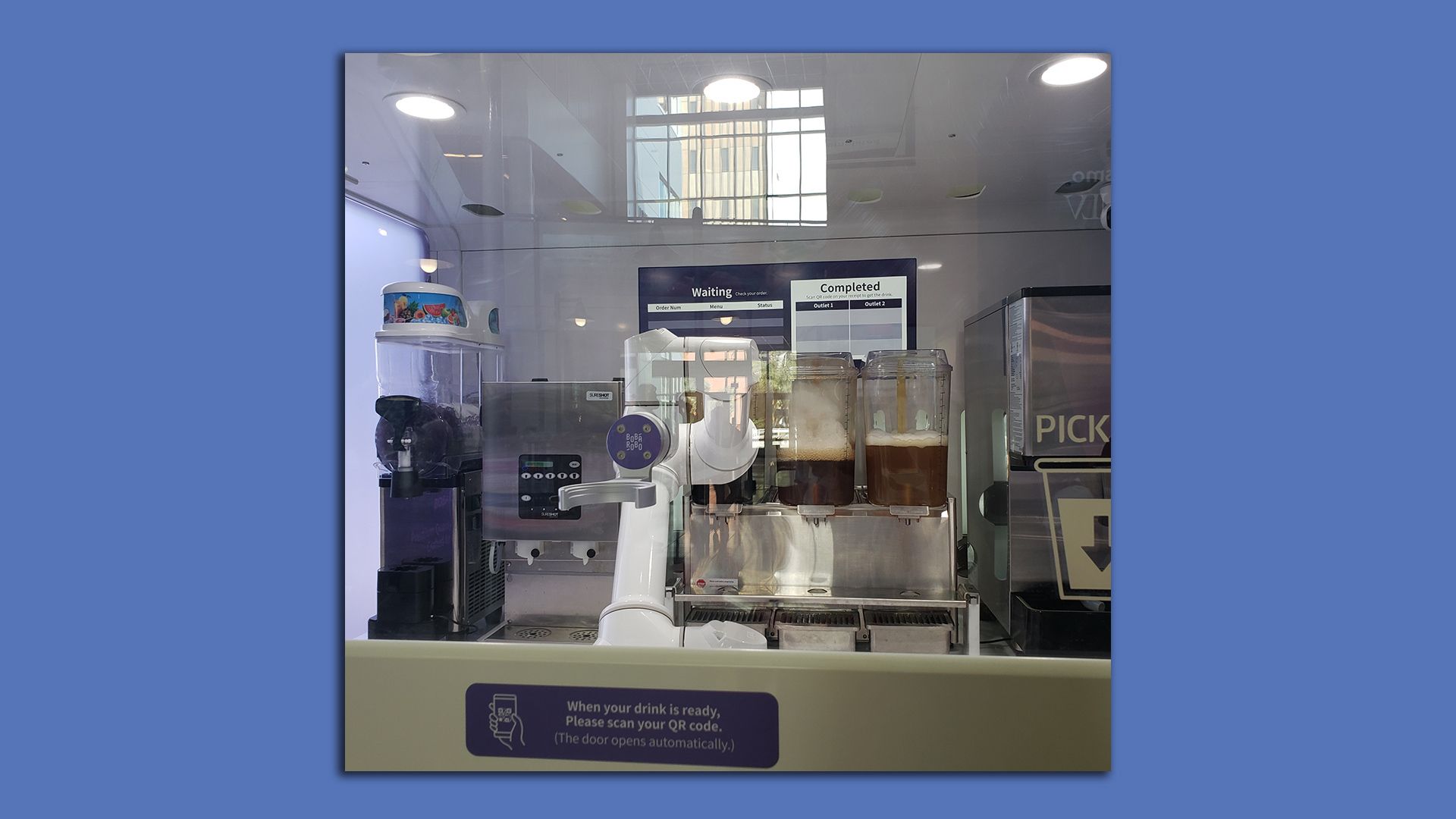| | | | | | | Presented By Google Cloud | | | | Axios What's Next | | By Jennifer A. Kingson, Joann Muller and Erica Pandey ·Oct 12, 2021 | | 2021's holiday shopping ritual? It's hard to tell what store shelves will hold — virtually or in the real world — but brace yourself for plenty of frustration and disappointment, as Joann Muller reports. - Today's What's Next reader photo comes from Shainna Alipon, a student at the University of Nevada, Las Vegas, who shows us a campus novelty.
- Please send your photo to whatsnext@axios.com.
Today's Smart Brevity count: 1,174 words ... 4.5 minutes. | | | | | | 1 big thing: Lots of cash, but less to buy this holiday season |  | | | Illustration: Sarah Grillo/Axios | | | | After more than a year of pandemic-related abstinence, people are in a spending mood this holiday season. The problem is there's going to be less stuff to buy, Joann Muller writes. Why it matters: Global supply chain disruptions have left many retailers with empty shelves. And the bottlenecks are getting worse, not better, Bloomberg reports. - For giddy consumers, that pent-up holiday excitement could turn into disappointment by December if they can't buy the toys and gifts they want.
- And for those lucky enough to snag the perfect gift, they'll likely pay more.
The big picture: After putting away extra savings for a year and a half, consumers say they will spend an average of $1,447 on gifts, travel and entertainment this year — 20% more than last year, according to PWC's holiday outlook survey. - Even compared with the pre-pandemic 2019 season, spending will be up 13%, as consumers finally feel free to celebrate the holidays with family and friends.
Yes, but: There could be slim pickings of everything from toys and clothing to electronics and cars. - It's the same mismatch of supply and demand hitting every aspect of our lives.
- E-commerce sales, which rose about 40% in 2020, are up another 38% so far this year but have flattened recently — a possible result of low inventories, per data from Bloomreach, a digital commerce software company.
What's happening: Some of the biggest U.S. retailers are finding ways around the inventory shipping delays to save their most important season of the year. - Walmart, Target, Home Depot and Costco are among those chartering their own cargo ships to import goods.
- Some are also using air freight — which is far costlier — to try to stock shelves in time.
- Such moves will hurt retailers' profit margins — unless they jack prices way up — but companies don't want to miss out on consumers' big spending plans.
Yes, but: Smaller chains and mom-and-pop stores don't have such resources. - "For retailers whose business is already not in great shape ... this could be kind of the last straw," said Brian Walker, Bloomreach's chief strategy officer.
 Data: PwC; Chart: Will Chase/Axios Read the full story. |     | | | | | | 2. Tech feels labor market crunch |  | | | Illustration: Aïda Amer/Axios | | | | Openings for tech jobs like engineer or software developer have spiked as an already tight U.S. job market weathers the economy-wide effects of the pandemic, writes Margaret Harding McGill in Axios Login. The big picture: Tech workers were in high demand pre-pandemic, and the COVID era's rapid moves to digital further intensified that need. By the numbers: There were more than 1.2 million unique active job vacancy postings as of early September in computer occupations such as software developer or programmer in the U.S., according to an analysis by the National Foundation for American Policy based on data from Emsi Job Posting Analytics. - That's up 15% from six months earlier, NFAP found.
- Employment website Indeed told Axios that U.S. software development job postings in September were up 73% compared with February, while total U.S. job postings are up about 43%.
- LinkedIn says the number of U.S. job openings for the software and IT industry has grown 119% since the start of the pandemic.
- Recruiting software company iCIMS told Axios job openings for tech occupations are up 69% since January.
What they're saying: "Recruiting tech is very different," iCIMS director of data insights Rhea Moss told Axios. "It's a finite number of people with that skill set. They were always in very, very high demand." Share this story. |     | | | | | | 3. We're getting used to WFH, big time |  Re-created from Grant Thornton; Chart: Axios Visuals Baby boomers may recall a world in which workers were largely grateful for their jobs and didn't job-hop a lot. Today the dynamic has changed beyond recognition, if a new survey of office workers from professional services firm Grant Thornton is any indication, Jennifer A. Kingson writes. - While 56% of the 1,584 workers surveyed said they looked forward to returning to the office, 40% said they'd seek another job if forced to return there full-time.
- More than two-thirds said that WFH had improved their work-life balance.
- 33% were actively job-searching.
Why it matters: The "great resignation" has tilted power toward workers, prompting employers to give way on perks, benefits and workplace rules. - Policies were growing looser before the pandemic: free snacks, business casual, bring your pet.
- But the new normal of WFH has prompted workers to start making quality-of-life demands that their predecessors would only dream about.
What they're saying: "There is most definitely a war for talent occurring, with an intensity unseen in recent years," Tim Glowa, a principal and leader at Grant Thornton, said in a press release. - "Our survey finds that workers want flexibility," he said. "But 'flexibility' does not mean working from home 100% of the time, and physically returning to work does not mean being in the office five days a week."
|     | | | | | | A message from Google Cloud | | Explore what's now and what's next at Google Cloud Next | | |  | | | | From live Q&As with experts to hands-on demos and real-world applications of the latest Google Cloud tech, explore the possibilities at Next '21. Get informed, be inspired and expand your expertise. Register now to build a customized experience. | | | | | | 4. Pondering Biden's Plan(et) B |  | | | Illustration: Annelise Capossela/Axios | | | | Plan A for the White House is walking into the UN climate summit in Glasgow with a huge new emissions-cutting law from Congress. Plan B is more complicated, Ben Geman writes in Axios Generate. The big picture: It's anyone's guess whether Democrats' reconciliation plan will pass before the summit starts at the end of the month, and if so, whether huge climate investments will be intact. - The same goes for the bipartisan infrastructure plan, which has smaller, but still significant, climate measures.
Why it matters: As the window narrows fast to keep warming within the Paris Agreement targets, getting other nations on board with aggressive efforts is tougher if President Biden's legislative agenda is stuck. What we're watching: What's Plan B? - A White House aide said there's "a number of paths to meeting our emission goals and targets," adding the agenda "doesn't hinge on reconciliation or the infrastructure package alone."
- Biden's pledge under the Paris Agreement is a 50%-52% cut in U.S. emissions below 2005 levels by 2030.
The intrigue: We're watching for new moves before the summit. A strategy document on meeting the 2030 target is expected this year at some point. There's also the possibility of a congressional deal during the two-week summit. - And who knows, maybe a wild card's in the offing. Some legislators and activists want the White House to declare a climate "emergency" that frees up new federal powers.
The bottom line: Tufts University climate expert Rachel Kyte tells the New York Times that if the bills don't pass, the U.S. will roll into the Glasgow summit with "fine words" but "not much else." Read the full story. |     | | | | | | 5. Reader photo of the day |  | | | Photo: Shainna Alipon | | | | What's next: Tea-making robots Shainna Alipon writes: "I'm a student at the University of Nevada, Las Vegas (UNLV). The images I attached feature a boba [bubble tea] robot in our Student Union. It is an A.I. robot that makes boba, and you order on your phone. "After reading the company's website, it seems that UNLV is the first location out of the entire United States to have this boba robot. The creators of this robot are based in Korea. "This amuses me because a boba robot is the most West Coast college student thing I've ever heard, so it's pretty brilliant that the company decides to put their first robot on UNLV." |     | | | | | | A message from Google Cloud | | Looking for your next cloud insights? Join Google Cloud Next | | |  | | | | Join Next '21 to experience live Q&As with leading experts and hands-on demos with the latest Google Cloud tech. This no-cost digital event lets you explore new possibilities, get informed, be inspired, and expand your expertise. Register now. | | | | Thanks for reading! If this email was forwarded to you, feel free to sign up for Axios What's Next here. |  | | It'll help you deliver employee communications more effectively. | | | | | | Axios thanks our partners for supporting our newsletters. If you're interested in advertising, learn more here.
Sponsorship has no influence on editorial content. Axios, 3100 Clarendon Blvd, Suite 1300, Arlington VA 22201 | | | You received this email because you signed up for newsletters from Axios.
Change your preferences or unsubscribe here. | | | Was this email forwarded to you?
Sign up now to get Axios in your inbox. | | | | Follow Axios on social media:    | | | | | |










No comments:
Post a Comment